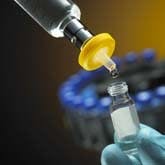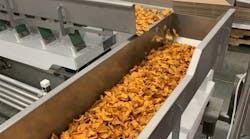Millipore provides syringe filters, membranes and holders in many configuration that are designed and manufactured to maximize ultra-high pressure liquid chromatography (UHPLC) system performance. These devices minimize column clogging and have low extractables, low binding and low hold-up volumes to optimize sample preparation. Lab water systems are also available that provide ultrapure water for all aspects of UHPLC from mobile phase preparation to standards, blanks and samples.
A sampling of Millipores UHPLC compatible products include:
- Millex Syringe Filters These filters ensure minimal signal-to-noise ratios and clean baselines. They have a broad chemical compatibility and low hold-up volumes, reportedly making them a convenient means of clarifying and/or removing small particles from samples prior to UHPLC analysis.
- Millipore Express Membrane Millipore Express Plus membrane, the first asymmetric PES membrane available for ultra-fast filtration in laboratory applications, consists of polyethersulfone (PES) and enables the rapid filtration of additives, buffers and other aqueous solutions. Millipore Express Plus membrane is available as 25- and 47-mm cut disks with 0.22 µm pore sizes as well as Steritop vacuum filter cups and syringe filter devices.
- Milli-Q water with an Advantage A10® monitor and Q-POD® dispenser This ultrapure water system is designed to conveniently deliver high quality ultrapure water. The compact production unit may be placed on or under the bench, while the Q-POD unit polishes and delivers water at the point of use. Up to three Q-POD units may be attached to any one production unit at different locations throughout the laboratory.
- MultiScreen Solvinert Plates These plates are optimized for drug discovery applications, including total drug analysis. They come in both deep well and standard volumes and are available with a choice of either chemically resistant hydrophobic or hydrophilic PTFE membranes. They demonstrate low binding, low extractables and high recoveries.





